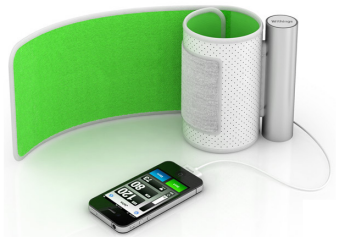Standalone or iPhone connected device?

Another day, and yet another gadget that you can connect to your iPhone that does something that could previously be done with a standalone device. What's the attraction of a device that connects to the iPhone over one that's standalone?
Note: When I say iPhone, I mean iOS family as a whole, including iPod touch and the iPad.
The device in question today is a blood pressure monitor from Withings. This is a neat looking blood pressure monitor that hooks up to the iPhone, iPod or iPad. A neat iPhone accessory that retails for $129.
It's a neat device that allows you to log your blood pressure readings in an app, and even send them to your doc.
Like I've said already, it's a neat device. But at $129 (iPhone sold separately) it's expensive. You can pick up a comparable iPhone-free blood pressure monitor for a lot less money. The cheaper devices are just as accurate and just as easy to use (if not easier since you don't have to connect it up to the iPhone and use an app), but they lack the easy recording feature and the ease of taking (or sending) your results to the doc.
I like it, and I have an iPhone, but I gotta admit that the $129 price tag puts my blood pressure up.
The blood pressure monitor is not the first such medical device. Take this blood glucose meter by Sanofi Aventis. Again, it does pretty much what every other blood glucose monitor does, but it also connects to the iPhone.
[poll id="642"]
It seems that there's certainly a market for devices that command a premium price but which take the hassle away from recording the data. What's also curious is that there seems to be a market for iPhone devices, but the market for Android or WP7 connectable devices is pretty non-existent.
